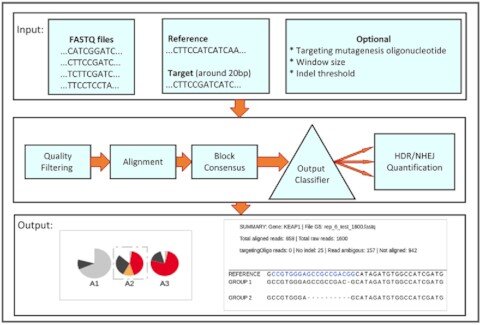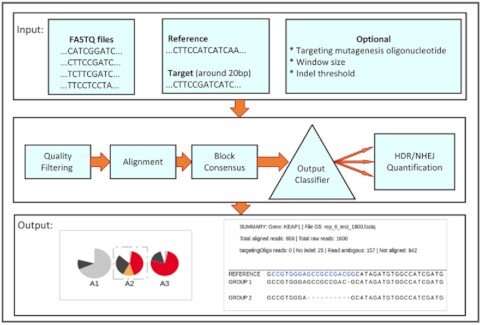

A team of scientists from the IUF—Leibniz Research Institute for Environmental Medicine in Düsseldorf developed and validated a computational webserver that allows scientists to genotype mutations using nanopore sequencing. The results of this study were published in the journal Nucleic Acids Research.
Diseases of genetic cause can be investigated by inducing the respective mutations in cell lines that are then used to model human diseases. The overall aim is to elucidate underlying mechanisms, interactions with environmental factors and ideally to find curative strategies. A crucial step in generating genetically modified cell models is to verify the inserted mutation. Therefore, the genetic information carrier of the cells is decoded (sequencing) and compared to the reference set of genetic information in healthy individuals (genotyping). To support scientists with the comparison, different workflows and software are available, but many of them require expensive high-tier sequencers or manual curation efforts.
To address this issue, a team of scientists from the Genome Engineering and Model Development lab at the IUF—Leibniz Research Institute for Environmental Medicine in Düsseldorf, led by Dr. Andrea Rossi, developed a robust, versatile, and easy-to-use computational webserver named CRISPRnano that enables the analysis of noisy reads generated by affordable and portable sequencers including Oxford Nanopore Technologies (ONT) devices. CRISPRnano allows fast and accurate identification, quantification, and visualization of genetically modified cell lines; it is compatible with Next Generation Sequencing (NGS) and ONT sequencing reads, and it can be used without an internet connection.
Deep learning empowers discovery of new genetic mutation in cancer
Thach Nguyen et al, Identification of genome edited cells using CRISPRnano, Nucleic Acids Research (2022). DOI: 10.1093/nar/gkac440
Provided by
Leibniz-Institut für umweltmedizinische Forschung
Citation:
A new and easy-to-use web server to identify genome edited cells (2022, July 15)
retrieved 15 July 2022
from https://phys.org/news/2022-07-easy-to-use-web-server-genome-cells.html
This document is subject to copyright. Apart from any fair dealing for the purpose of private study or research, no
part may be reproduced without the written permission. The content is provided for information purposes only.